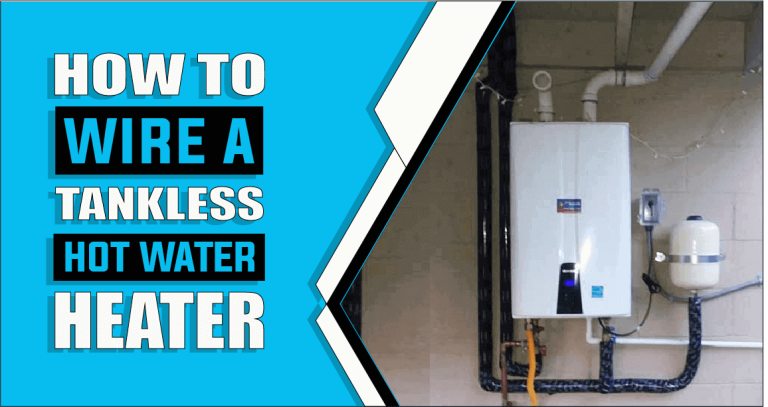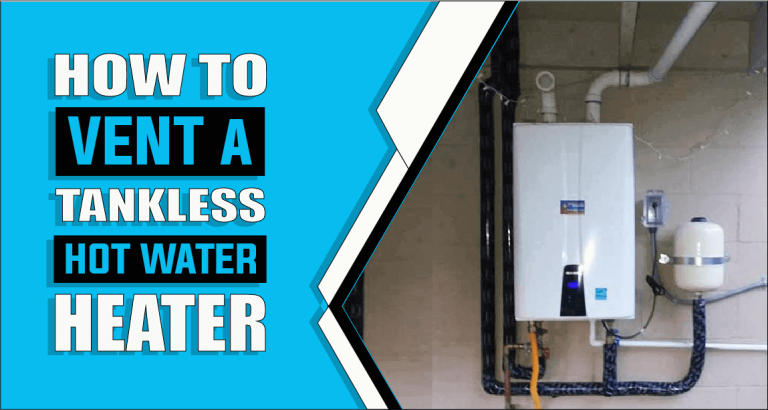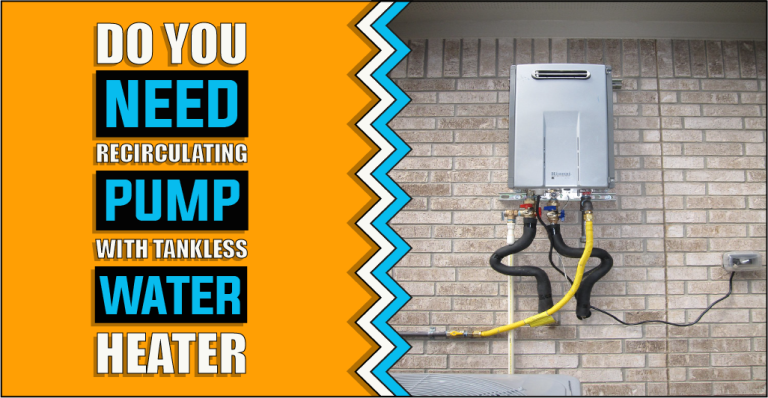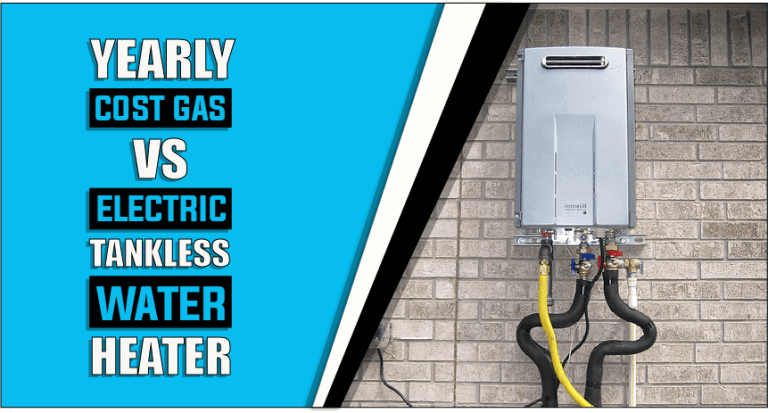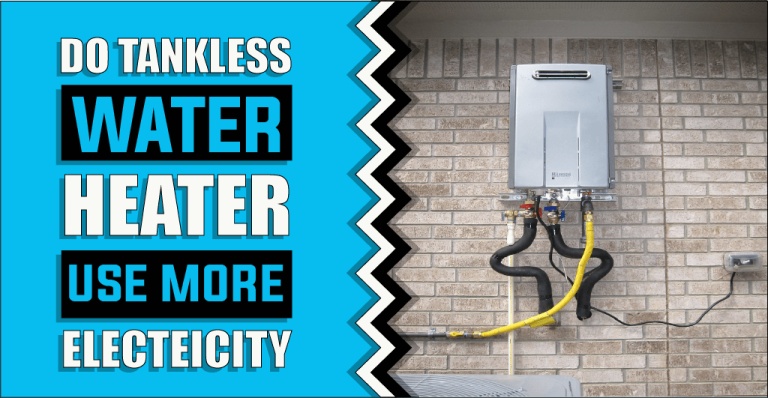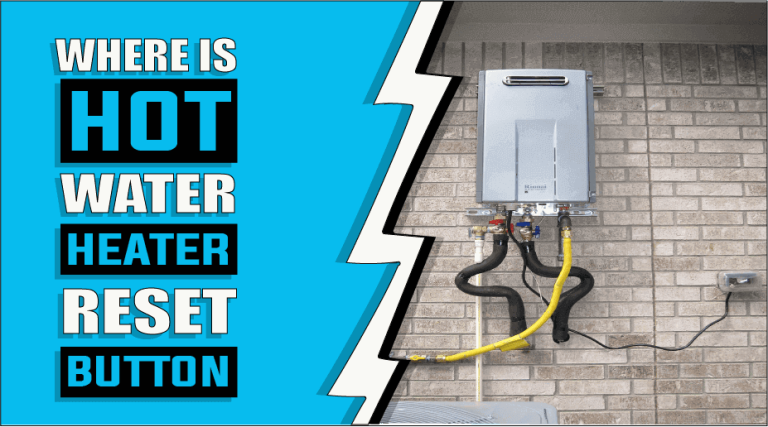What Does A Hot Water Heater Expansion Tank Do | Understanding Their Function
A water heater expansion tank is essential to a plumbing system, but many people are unaware of its purpose. This device is crucial in maintaining the optimal pressure within a water heater system. As the water heats up, it expands, creating increased pressure that can strain the pipes and fixtures. The expansion tank acts as a safety valve, absorbing the excess pressure and preventing potential damage. Allowing the water to expand and contract within the tank helps extend the water heater’s lifespan and protect the entire plumbing system. Homeowners may experience leaks, bursts, or other issues due to excessive pressure without an expansion tank. Understanding the importance of this often-overlooked device can help maintain the efficiency and longevity of a water heater system. Now, let’s look at what a hot water heater expansion tank does.

Understanding Hot Water Heater Expansion Tanks
Water heater expansion tanks are essential components in residential and commercial plumbing systems designed to manage the pressure fluctuations caused by thermal expansion. These tanks are specifically engineered to address a common issue in water heating systems: as the water heats up, it expands, increasing pressure within the plumbing system.
Without a means to accommodate this increased pressure, it can lead to several problems, including burst pipes, damaged water heaters, and inefficient operation.
1: Basic Function –
- Hot water heater expansion tanks serve as a reservoir for the excess water volume created during heating.
- They act as a buffer, absorbing the extra pressure and preventing it from causing harm to the plumbing system.
2: The Role of Expansion Tanks in the Plumbing System –
Expansion tanks play a crucial role in maintaining the stability of a plumbing system:
- Pressure Regulation: They help maintain a consistent water pressure level throughout the system, ensuring that pressure variations do not lead to leaks or damage.
- Protection: By absorbing excess pressure, expansion tanks protect various components of the plumbing system, including pipes, fixtures, and the water heater itself.
- Improved Efficiency: By reducing stress on the system, expansion tanks contribute to the efficient operation of the water heater, potentially extending its lifespan and saving energy.
What does a water heater expansion tank do? Let’s find out!
An expansion tank in a hot water heating system is vital in maintaining the proper pressure. Here’s how it works:
1: Prevents Excessive Pressure –
Preventing excessive pressure is a crucial function of a water heater expansion tank. As hot water is heated and expands, it can cause the pressure within the system to rise rapidly. Without an expansion tank, this increased pressure can lead to various issues.
Firstly, excessive pressure can strain the plumbing system, causing pipes to leak or burst. This can result in costly repairs and water damage to your home. The expansion tank helps protect your pipes and fixtures from such damage by absorbing the excess pressure.
Secondly, high pressure can also cause water hammers, which are loud banging noises that occur when water flow is suddenly stopped or changed. This can damage pipes, valves, and other plumbing components over time. The expansion tank helps regulate pressure fluctuations, reducing the occurrence of water hammer and prolonging the lifespan of your plumbing system.
Furthermore, consistent and controlled pressure provided by the expansion tank ensures a reliable water supply throughout your home. With balanced pressure, you won’t experience sudden drops in water pressure while using multiple fixtures simultaneously.
2: Safety Valve –
A water heater expansion tank is a safety valve in the plumbing system. Its primary function is to protect against potential damage caused by excessive pressure.
When water heats up, it expands and increases in volume. This expanded water can build up pressure within the system without a safety valve like the expansion tank. The increased pressure can strain pipes, fixtures, and other components, leading to leaks, bursts, or even catastrophic failures.
The expansion tank acts as a safety net by absorbing the excess pressure. It provides a space for the water to expand, preventing the pressure from reaching dangerous levels. This helps to safeguard the entire plumbing system from the detrimental effects of high pressure.
By reducing pressure fluctuations, the expansion tank extends the water heater’s lifespan and minimizes the risk of costly repairs. It also safeguards against potential water damage to your home from burst pipes or leaks.
3: Extends lifespan –
A water heater expansion tank plays a vital role in extending the lifespan of your water heater system. Addressing the issue of excessive pressure helps minimize wear and tear on various components, ultimately prolonging the entire system’s life.
When water is heated, it expands in volume. Without an expansion tank to accommodate this expansion, the pressure within the system can rise significantly. This increased pressure strains the water heater, pipes, valves, and other equipment.
By absorbing the excess pressure, the expansion tank acts as a buffer, reducing the stress on these components. This, in turn, helps to prevent premature wear and extends their overall lifespan. With reduced strain on the system, the risk of leaks, bursts, and other damage is also significantly reduced.
Furthermore, the expansion tank contributes to more efficient water heater operation, which can further enhance its longevity. Regulating pressure fluctuations ensures that the water heater can function optimally and not be subjected to unnecessary stress.
Regular maintenance and inspections of the expansion tank are still important to ensure its proper functioning and effectiveness in extending the lifespan of the entire water heater system. With proper care and the presence of an expansion tank, you can enjoy a longer-lasting and more reliable water heating system.
4: Protects Pipes and Fixtures –
A water heater expansion tank protects pipes and fixtures within a plumbing system. By mitigating the effects of excessive pressure, it helps to safeguard these essential components from potential damage.
When water is heated, it expands and increases in volume. Without an expansion tank to absorb this expansion, the pressure within the system can rise rapidly. This heightened pressure strains pipes and fixtures, which can lead to leaks, bursts, and other forms of damage.
By providing a designated space for the expanded water, the expansion tank prevents the pressure from reaching dangerous levels. It acts as a buffer, absorbing the excess pressure and reducing the strain on the plumbing system. This helps to protect pipes and fixtures from the potential stress and damage caused by high pressure.
Additionally, the expansion tank helps to regulate pressure fluctuations in the system. This pressure stability ensures a more consistent water flow to the fixtures, reducing the risk of sudden drops or surges in water pressure. By maintaining balanced pressure, the expansion tank further protects the integrity of pipes and fixtures, prolonging their lifespan.
5: Reduces Water Hammer –
A water heater expansion tank plays a significant role in reducing water hammer within a plumbing system. A water hammer is the loud banging or knocking noise when a valve abruptly closes, causing a sudden change in water flow and pressure.
The pressure within the plumbing system can increase when water is heated and expands. This pressure buildup can contribute to a water hammer without an expansion tank. The force of the water being abruptly stopped can cause pipes to vibrate, shake, and even burst in severe cases.
By providing a cushion for the expanded water, the expansion tank helps to absorb the pressure fluctuations and reduce the occurrence of water hammer. As water expands, it enters the expansion tank, preventing the abrupt changes in pressure that lead to hammering noises.
An expansion tank’s presence helps maintain a more stable and consistent water flow, minimizing the risk of sudden pressure spikes and subsequent water hammering. This protects the plumbing system from potential damage and reduces the disruptive noise caused by water hammer.
6: Consistent Water Pressure –
Consistent water pressure is crucial in ensuring a reliable and efficient plumbing system. A water heater expansion tank plays a significant role in maintaining consistent water pressure throughout the system.
Without an expansion tank, pressure fluctuations can occur as water is heated and expands. These fluctuations can lead to inconsistent water pressure, causing issues such as low water flow or sudden surges in pressure.
By providing a dedicated space for the expanded water to go, the expansion tank helps to regulate pressure changes. As the water heats up and expands, it enters the expansion tank, preventing excessive pressure buildup within the system. This regulated pressure ensures a consistent water flow to all fixtures and prevents sudden drops or surges in water pressure.
Having consistent water pressure is essential for various reasons. It ensures that appliances and fixtures, such as showers and faucets, function optimally without experiencing intermittent water flow or uneven pressure. It also helps maintain the plumbing system’s efficiency by ensuring that water flows smoothly through pipes and valves.
7: Efficient Water Heating –
Efficient water heating is essential for both energy conservation and cost savings. A water heater expansion tank can improve the efficiency of water heating systems.
An expansion tank helps maintain optimal water heating efficiency by addressing two key factors: pressure fluctuations and energy loss. By absorbing the expanded water volume resulting from heating, the expansion tank relieves pressure on the water heating system, reducing strain on pipes and fixtures. This minimizes the need for frequent repairs or replacements, ensuring the system’s longevity.
Furthermore, the expansion tank aids in preventing energy loss. Traditional water heaters often experience heat loss through thermal expansion. When hot water expands, it can lead to pressure buildup and ultimately cause the relief valve to activate, releasing hot water and wasting energy.
However, with an expansion tank, expanded water is stored and reintegrated into the system when necessary. This process reduces the frequency of relief valve activation, resulting in lower energy consumption and improved overall efficiency.
8: Reduces Energy Consumption –
Reducing energy consumption is not only beneficial for the environment but also for cost savings. A water heater expansion tank can lower energy consumption in a water heating system.
An expansion tank plays a crucial role in reducing energy consumption by addressing two key factors: pressure fluctuations and heat loss. When water is heated, it expands, increasing pressure within the plumbing system. Without an expansion tank, this pressure buildup can cause valves to open, releasing hot water and wasting energy. However, with an expansion tank, the expanded water is stored and reintegrated into the system, minimizing the need for frequent valve activation and reducing energy waste.
Additionally, traditional water heaters often experience heat loss through thermal expansion. As hot water expands, it can lead to pressure buildup and subsequent heat loss through the relief valve. Utilizing an expansion tank ensures that the expanded water is safely stored, preventing the release of hot water and minimizing heat loss. This results in improved energy efficiency and reduced energy consumption overall.
How Expansion Tanks Work
Expansion tanks are vital components of a plumbing system designed to mitigate the potentially damaging effects of thermal expansion in hot water systems. Understanding how they work is essential for appreciating their role in maintaining system integrity and safety.
1: Thermal Expansion –
Thermal expansion occurs when water is heated, causing it to expand in volume. This expansion is a natural consequence of the laws of physics and can substantially increase pressure within a closed plumbing system. To illustrate this concept, consider what happens when you heat water in a sealed container, such as a water heater:
- Heating the Water: When the water heater’s heating element or gas burner warms the water, its temperature rises.
- Expansion of Water: As the water temperature increases, it expands and occupies more space within the water heater and the connected plumbing pipes.
- Pressure Buildup: This expansion leads to a significant increase in pressure throughout the plumbing system. Without an expansion tank, this pressure could reach levels that may cause pipes to burst, valves to malfunction, or even damage the water heater.
2: Preventing Excessive Pressure –
Expansion tanks are designed to prevent the adverse consequences of excessive pressure from thermal expansion. They function as pressure relief valves and reservoirs, effectively managing the increased volume of water caused by heating.
3: Components and Operation –
To achieve their purpose, expansion tanks typically consist of the following components:
- Diaphragm or Bladder: Inside the expansion tank is a flexible diaphragm (in diaphragm tanks) or a replaceable bladder (in bladder tanks). This component separates the tank into two chambers: one for water and one for air.
- Air Cushion: The air chamber within the expansion tank contains a specific amount of air. This air cushion is crucial for accommodating the expanded water volume.
- Valve Mechanism: Expansion tanks often feature a Schrader valve (similar to those found on car tyres) to adjust and maintain the air pressure within the tank. This valve allows for fine-tuning the expansion tank’s performance.
Here’s how expansion tanks work in practice:
- Accommodating Thermal Expansion: When water within the plumbing system expands due to heating, it enters the expansion tank’s water chamber. As the water volume increases, it pushes against the diaphragm or bladder.
- Compression of Air Cushion: The pressure increase from the expanding water compresses the air cushion in the tank’s air chamber. This compression absorbs the excess pressure and prevents it from affecting the plumbing system.
- Maintaining Stable Pressure: The expansion tank effectively maintains a stable pressure level within the plumbing system, ensuring that pressure spikes are controlled and do not damage pipes, fixtures, or the water heater.
By serving as a buffer against pressure fluctuations, expansion tanks play a pivotal role in maintaining hot water systems’ safety, efficiency, and longevity.
Installation and Maintenance
Proper installation and maintenance of water heater expansion tanks are crucial to ensure their effectiveness in safeguarding your plumbing system. This section will cover the critical aspects of installing and maintaining these essential components.
1: Proper Placement of Expansion Tanks –
- Near the Water Heater: Expansion tanks should be installed as close to the water heater, typically on the cold water supply line. Placing them nearby ensures they can effectively absorb excess pressure from the water heater’s operation.
- Orientation and Mounting: Expansion tanks are usually mounted vertically, with the air valve pointing upwards. This orientation allows for proper air cushion expansion and efficient operation.
2: Sizing the Expansion Tank –
- Factors to Consider: Selecting the right-sized expansion tank is critical. Factors determining the tank size include the water heater’s capacity (in gallons), the water temperature increase, and the water pressure in your plumbing system.
- Calculating the Right Size: Expansion tank sizing can be calculated using formulas or online calculators, which consider the specifics of your water heating system. Choosing an expansion tank that can accommodate the volume of expanded water without overpressurizing the tank or the plumbing system is essential.
3: Maintenance Tips –
- Checking for Leaks: Inspect the expansion tank for any signs of leaks or corrosion. Leaking tanks should be promptly replaced to prevent water damage and maintain system integrity.
- Re-pressurizing the Tank: Over time, the air cushion within the expansion tank may lose pressure, reducing its effectiveness. Use a tyre pressure gauge to check the air pressure regularly, aiming to maintain it at the recommended level (typically around 40 PSI, but consult the manufacturer’s guidelines). If the pressure drops significantly, use an air compressor to re-pressurize the tank to the correct level.
- Routine Inspections: Include the expansion tank in your routine plumbing system inspections. Ensure all connections are secure and there are no signs of wear or damage to the tank or its components.
- Professional Maintenance: Consider scheduling periodic professional inspections and maintenance for your entire water heating system, including the expansion tank. Professionals can identify and address any issues early, prolonging the life of your equipment.
Regular maintenance and proper installation ensure that your water heater expansion tank functions optimally, preventing damage to your plumbing system and extending the life of your water heater. By adhering to these guidelines, you can enjoy a reliable and efficient hot water system while minimizing the risk of costly repairs.
Conclusion:
In conclusion, a hot water heater expansion tank is critical in maintaining a plumbing system’s integrity and efficiency. Its primary function is to absorb the excess pressure within the water heater due to thermal expansion. This guide has elaborated on what a water heater expansion tank does. Installing an expansion tank safely absorbs excess pressure, reducing stress on the water heater and extending its lifespan. This prevents potential damage and ensures consistent water pressure throughout the system. Overall, a hot water heater expansion tank is an essential component that helps maintain the entire plumbing infrastructure’s safety, functionality, and longevity.
FAQS:
An expansion tank is installed on the cold water supply line connected to the water heater. It consists of a sealed chamber separated by a diaphragm or bladder. As the water expands due to heating, it enters the expansion tank, compressing the air or gas on the other side of the chamber, effectively absorbing the excess pressure.
If you experience frequent pressure relief valve discharges, water hammer noises, or fluctuations in water pressure when using hot water, it may indicate a need for an expansion tank. Consulting with a professional plumber is recommended to determine if an expansion tank is necessary based on your specific plumbing setup and local building codes.
While some DIY enthusiasts may be capable of installing an expansion tank, it is generally recommended to hire a licensed plumber. Proper installation is crucial for the tank to function correctly and ensure compliance with local building codes. A professional plumber will ensure the tank is appropriately sized and integrated into your plumbing system for optimal performance.
Signs of a malfunctioning expansion tank include water leaks around the tank, fluctuations in water pressure, or unusual noises from the water heating system. If you notice any of these issues, it’s best to have a professional inspect and repair or replace the tank as needed.
Ella John is passionate about helping her readers make the best choice when purchasing a heater. She understands that selecting a heater can be difficult and strives to provide information to help make the decision easier. Ella’s website, Heatersinfo.com, provides valuable insight into heating trends and types of heaters and tips on how to care for them. She also advises selecting the right heater based on individual needs and preferences. Her expertise in electronics makes her an excellent source of knowledge, and she is confident that anyone who visits her website will find the perfect heater information for their needs. Ella’s dedication to helping others make educated decisions about buying the right heater is unparalleled, and she hopes to continue offering her expertise for many years. With Ella’s help, finding the perfect heater can be a breeze!

